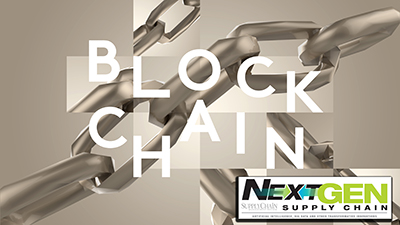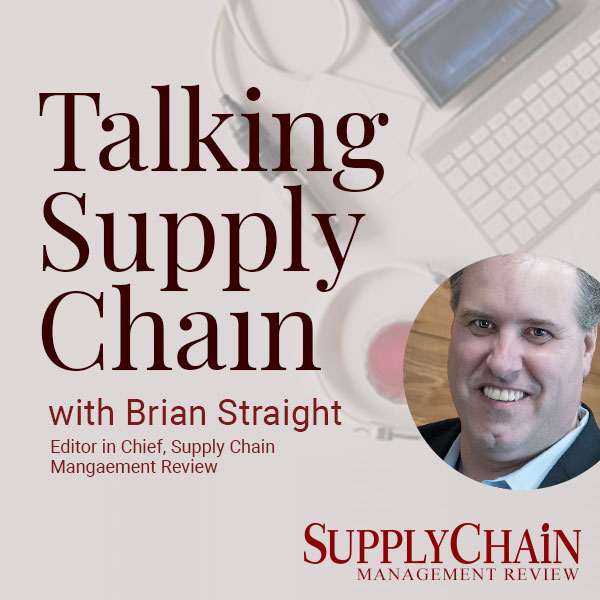 This month we spoke with Ken Cottrill, co-founder and research principal at Chain Business Insights LLC. He is also global communications consultant at the MIT Center for Transportation & Logistics. He is currently pursuing research projects about blockchain and other technologies affecting the supply chain. Beyond his writing, editing and research, Cottrill has worked as a logistics planner in the ocean shipping industry. He can be contacted at [email protected].
This month we spoke with Ken Cottrill, co-founder and research principal at Chain Business Insights LLC. He is also global communications consultant at the MIT Center for Transportation & Logistics. He is currently pursuing research projects about blockchain and other technologies affecting the supply chain. Beyond his writing, editing and research, Cottrill has worked as a logistics planner in the ocean shipping industry. He can be contacted at [email protected].
NextGen Supply Chain: No matter how you cut it, blockchain is new to everyone. Where does blockchain stand in the supply chain at this point?
Cottrill: Right now, many companies are still coming to grips with what the technology can do, others are more advanced and are at the testing stage. There are no big, grand applications in place in the supply chain quite yet. Instead, companies are testing blockchain to see what it can do to improve functional supply chain efficiencies. It seems like every single week a new project is being announced. This is very much a global trend ranging from China to Australia and India plus the U.S. and Canada, to name a few.
NextGen Supply Chain: What's the difference between tests and applications?
Cottrill: In the supply chain, companies are conducting very controlled experiments to see how blockchain works at collecting specific information and disseminating that information securely and confidentially to those who need access to it. This way, companies can determine how effective blockchain is at improving specific functional supply chain efficiencies. We are at the very early stages here.
Beyond the functional efficiencies of blockchain, companies are also interested in how the technology can be used to make the supply chain more transparent to the consumer, especially in food.
NextGen Supply Chain: What's an example of that?
Cottrill: For Thanksgiving, Cargill used a blockchain-based solution to track turkeys. Specifically, the company tracked its Honey Suckle White® brand of turkey from the farm to the table. Consumers in certain markets could text or enter a code printed on packaging to access a bio of the farm where the individual turkey was raised. This brought in the farmer, the feed and the growing conditions at the farm.
Cargill maintains that it is responding to consumer-driven demand for farm-to-table transparency in the supply chain. It used the pilot to explore the value of traceability. Projects like this are developing blockchain solutions that track food items from the farm through the processing, packaging and distribution steps of the supply chain.
NextGen Supply Chain: That's actually pretty amazing. Never thought of getting a supply chain bio on a turkey before. And while Cargill conducted a very controlled experiment, it probably has far reaching implications.
Cottrill: Oh, it does. The big food companies are going through a transition that is requiring them to focus more on new foods that the public sees as healthier than in the past. That's one part.
Just as important, consumers want more information about where their food came from and how it was processed. For instance, how do you know “organic” is really organic and exactly what does organic means for that particular food. Blockchain technology makes it possible to provide those kinds of details, which is much more than you'll ever get on a label.
Our current supply chain systems are too siloed, too limited, too unsecure to collect and share all the information people say they would like to have about their food. That is if current technologies can even collect and distribute the information in the first place. Blockchain is a game changer here.
NextGen Supply Chain: What are some other tests that are important these days?
Cottrill: One that could really have an impact used blockchain to create a paperless bill of lading. It is claimed to be a first of its kind. Zim Integrated Shipping Services partnered with third-party logistics provider Sparx and blockchain technology provider Wave Limited. The shipment went from China to Canada.
For years, we've been talking about digitized documentation. Zim says that this was the first blockchain-based pilot test of a paperless bills of lading led by an ocean carrier. You can't take anything for granted here. Chain Business Insights launched a survey this month to find out more about the development work going on in trade finance.
NextGen Supply Chain: What are some of the advantages that projects like this have found with blockchain?
Cottrill: First of all, security of the data is complete. We all know fraud is rampant with traditional trade documents such as paper bills of lading. Secondly, the speed of completing the transactions far exceeds that possible with paper, creating a huge supply chain efficiency. Those two combined greatly reduce risk. They reduce the risk of fraudulent transactions caused by inaccurate data. In the end, this brings down the cost of risk management in the supply chain.
NextGen Supply Chain: When we spoke earlier, you said there was a third test you would like to highlight here. What is it?
Cottrill: This one is in food, too. An Australian grain exporter worked with technology provider AgriDigital to track organic oats including ownership and payments using blockchain. The pilot showed that blockchain is effective in the end-to-end supply chain at making these transactions more secure – commodity trading is vulnerable to fraud – and speeding up the payments process. In this case, that meant from the commodity trade right through the processing and packaging of the oats. And as I said, it wasn't just ownership but payments that blockchain tracked.
So there you have three quite different tests or pilots that are proving the potential of blockchain on several different levels in the supply chain. This is a technology that is not going away, regardless of what happens with bitcoin. We all need to stay on top of it.
Gary Forger is the special projects editor for Supply Chain Management Review. He can be reached at [email protected].
SC
MR


Latest Supply Chain News
- How S&OP provides the answer to in-demand products
- AI, virtual reality is bringing experiential learning into the modern age
- Humanoid robots’ place in an intralogistics smart robot strategy
- Tips for CIOs to overcome technology talent acquisition troubles
- There is still work to do to achieve supply chain stability
- More News
Latest Podcast

 Explore
Explore
Software & Technology News
- AI, virtual reality is bringing experiential learning into the modern age
- Humanoid robots’ place in an intralogistics smart robot strategy
- Tips for CIOs to overcome technology talent acquisition troubles
- Game on: Rethinking change management for the digital era
- Predicting stockouts: Enhancing FMCG resilience through data-driven insights
- Top Performers Investing in, Benefitting from AI
- More Software & Technology
Latest Software & Technology Resources

Subscribe

Supply Chain Management Review delivers the best industry content.

Editors’ Picks





